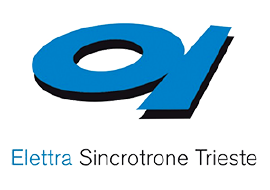Multitechnique investigation on Hydrogen Production Mechanism in Low-Temperature Methanol Decomposition Catalyzed by Ni3Sn4 Intermetallic Compound
Catalytic hydrogen production from methanol decomposition to syngas (H2 + CO) is a promising alternative route for clean energy transition. One major challenge is related to the quest for stable, cost-effective, and selective catalysts operating below 400 °C. We illustrate an investigation of the surface reactivity of a Ni3Sn4 catalyst working at 250 °C, by combining density functional theory, operando ambient pressure X-ray absorption spectroscopy, and high-resolution transmission electron microscopy.
Through this multitechnique approach, we discovered that the catalytic reaction is driven by surface tin-oxide phases, which are able to protect the underlying Ni atoms from irreversible chemical modifications, thus increasing the catalyst durability. Moreover, by comparing the results with another compound with different Ni:Sn ratio (Ni3Sn2), we found that Sn content plays a key role in enhancing the H2 selectivity with respect to secondary products such as CO2. These findings open new perspectives for the engineering of scalable and low-cost catalysts for hydrogen production.






